Today there is a huge number of unusual and amazing crops that are ideal for decorating and landscaping the plot. A bright and attractive plant is a monard - a decorative plant, having an amazing flavor and decorative qualities that are valued by landscape designers.
The monard is just an ideal plant for beginner gardeners and designers, because this culture is absolute not demanding and does not need constant care. But in the end, you will get an interesting plant and a unique garden composition with its participation at its summer cottage.
In this article we will consider the features and description of the monarch, we describe the most common types and varieties of this culture. We will tell you about the main nuances of agrotechnika growing in the open soil.
Features and description of the monarch
The flower of the monard is a perennial or annual herb plant, which belongs to a large family of licorious and combines one genus. This plant has a huge amount of beneficial properties, is ether solid, at the same time he has a special decorative value. The natural habitat of the monard is considered the territory of North America, including Canada and Mexico.
The people very often this plant is called differently. There are such names such as "Bee Balm", Melissa, Lemongrass. Bergamot monazh is called because of the amazing similarity of the smell, you can also say about the smell of Melissa and Lemongnik. In addition, green parts of the plant are used to brew very useful tea.
For the first time, this plant became known in the book of the Spanish botany Nicholas Monchades, who in 1574 described this plant among the huge number of cultures of the new world. He gave this plant a different name - the shower of Virgin. In his honor, the monard was named later by Karl Linnese during the classification of plant species and childbirth. In the world, this culture has become known in many years under the names of "Bergamot", "Lemon Mint", "Mint".
Description of the monard:
- The monard is a fairly tall perennial and annual herbaceous plant.
- Root system of plants is very developed.
- Depending on the specific type and variety, the monard may have both a reprehension and branching stems.
- Four stems, pretty thick, covered with a small omission.
- In height, the plant can maximize 150 cm.
- The stalks are covered with oblong gear lancetony leaves, which in some species and varieties of monards may have a pleasant and fragrant fragrance. Hence the folk names of the plant: Melissa, Bergamot, Lemongrass, Mint.
- Leaves have a bright green shade.
- The largest richness of the monard bush is gaining to 5 years after landing. During this time, the plant appears a large number of stems and foliage.
- The flowering of the monard begins in the second half of the summer with fragrant two colors.
- The usual classic color of the infraces of the monard is red, but today there are varieties with pink, white, purple flowers.
- Flowers are most often assembled into rather large and dense sound or private inflorescences in diameter reaching 7 cm.
- Flowers on the stem are usually located on the likeness of the pyramid - one above one.
- Monad is an excellent honey. Thanks to its fragrant colors.
- The fruit of the monard - nut. Inside which seeds ripen. The germination of seeds of this plant is three years.
- In one place, Monarch can grow from 5 to 7 years.
- Green parts of the plant are used in cooking as seasonings or salad, the leaves are used to prepare healing tea.
Diversity of species and varieties of monards
To date, there are about 20 different types of monards, which are largely or less grown in culture. All of them have differences in appearance, fragrance of foliage and shade of inflorescences, which allows you to find the most suitable variety for your site or your garden composition. Consider the most popular types and varieties of monards.
Monard lemon
- On the territory of Russia, this type of monard is grown as an annual.
- In the natural area there is a part of the territory of the United States and Mexico.
- The name of this plant speaks of his smell. With a minor rubbing of young leaves and plant stems, a pleasant citrus fragrance appears. However, in an adult plant, the fragrance is rather reminiscent of the soul. It is for this fragrance that the monard of lemon, from which is preparing useful and healing tea is appreciated.
- It is a herbaceous plant, which can be in height to reach 1 m.
- Leaves oblong lanceal.
- Flowers are collected in inflorescences consisting of 6-7 mutades.
- There may be different shades: purple, pink or white.
- The lemon monard begins to bloom in July and pleases its beautiful blooming view and aroma to the most frosts.
Monard hybrid
- This type includes grades of monards, which were obtained by crossing the main species with specific species signs.
- Usually, hybrid varieties of monards are obtained by crossing the monards of the tubular and the monards of the twofold.
Monard pointing
- This is a perennial grassy plant, which is grown in Russia as annual.
- The natural area of \u200b\u200bhabitat of this type of monarda is the eastern part of the territory of North America.
- The plant in height can reach 80 cm.
- Stems of tiers are covered with narrow lanceal leaves that have some decorativeness. They are located near the colors and have a bright salmon-pink shade.
- With a small rubbing, the leaves have the smell of thyme.
- Flowers are represented by a few inflorescences of a yellow shade.
- The blossom of the monarch point begins in July and lasts until September.
- This type of monards can be grown without any problems on flower beds and flower beds, as well as in various containers and pots.
Monard twigty
- This is a multi-year representative of the genus Monarch, which in Russia and other CIS countries is also grown as a long-term plant.
- Very often, this type of monards is called wild bergamot for his amazing and fragrant fragrance.
- The twightest monard has a long horizontal root.
- Stems in the plant are strong, reprehension covered with small hairs. In height can reach 70-150 cm.
- The stalks are completely covered with opposite and fairly large leaves, which can be 15 cm long.
- Green leaves with reddish veins, which makes them decorative value.
- Flowers are small, have a tubular shape and reach 3-4 cm sizes.
- Flowers are collected in large ring inflorescences. On average, in one inflorescence can be up to 30 small colors.
- Red-colored inflorescences are located in the sinuses of the upper leaves.
- To date, a large number of hybrid varieties of this type have been derived, which have different colors of inflorescences: white, pink, purple.
Monard Tubular
- A perennial grassy plant of a mint family.
- The natural area of \u200b\u200bhabitat of this species is considered to be the most part of North America, where the monard tubular or sword grows in steppes and prairies.
- The root system of the plant is creeping, which is eventually going to a huge com.
- Each plant has a large number of reprehensive stems, which can be in height to reach 65-120 cm.
- The stalks are covered with simple lanceal leaves that have a slight omission. The edge of the leaves slightly toothed. They are located on the stem oppositely and in length reach 5-8 cm.
- Flowers of a lilac shade are pancakes and are collected in annular inflorescences up to 5-7 cm in diameter.
- There are inflorescences at the ends of the stems and are surrounded by hopes with red veins.
- The flowering of the monard tubular begins in July or August.
- The plant has a fragrant aroma of Bergamot.
- He is an excellent honey.
Popular hybrid monards
- BLAUSTRUMPF monard. The variety is revealed relatively recently. The plant can reach 120 cm in height. Inflorescences have a bright purple purple tint. Flowers are used for cutting, as they can safely stand in a vase until the week.
- Monard "Squam". Refers to winter-hardy monards. Inflorescences can be represented in several colors: pink, purple or purple.
- Monard "Pawnee". The plant in height can reach 150-180 cm. Inflorescences are represented by purple flowers and a green core, which looks very original.
- Monard "Sanset". Plant flowers with bright purple inflorescences.
Monards reproduction: the most common ways
The monard without problems can be divorced by its own garden plot. For this, several ways are suitable: seed reproduction and vegetative. To the vegetative reproduction of the monards can be attributed to the division of the bush, segments of roots and cuttings. Carefully reviewing information about each way, you can choose for yourself the most suitable.
Seed reproduction of monarchs
- This method of reproduction is the most reliable, however, the most suitable for species plants. In the reproduction of hybrid varieties, you risk obtaining a plant with completely unpredictable external characteristics.
- To multiply the monard from seeds must be immediately after their collection from an adult bush.
- Seeds can be soiled directly into open ground. It is suitable for southern areas that are characterized by softer winters.
- Seed seeds in February. Thus, in two months they will be able to pass natural stratification. Shoot will appear in April. At this time, they will need to be carefully straightened.
- Seeds in the prepared bed can be sung immediately after their collection fall. With this method, your plants will bloom after a year.
- For greater reliability, seeds can be seeded. It is necessary to do this at the end of February or early March.
- Prepare containers and fill them with suitable soil. You can choose a special mix for vegetable crops.
- Place the seeds of the monarch seeds on the surface and superate a thin layer of sand, approximately 1.5-2 cm.
- Moisten a slightly surface and top with a film or glass. Place the container in the warm room.
- The first shoots will appear after about 10 days, after which they need to be divened to separate pots.
- During the growth of seedlings you can feed them with nitrogen fertilizers.
- In the open ground, the seedlings of the monards are planted in mid-May.
Reproduction of the division of the bush
- This method is rather necessary, since once every 5-6 years each adult plant must be replant and rehash.
- You need to divide the bush in the spring when the plant has not yet woke up after sleep, or late in autumn.
- Plant must be moistened and carefully dig.
- Then a sharp knife or shovel split the root system so that each part has several shoots and part of the root.
- Sections of sections can be treated with wood healing.
- Next, prepare the landing wells and place the decene in them in such a way that the root neck is on the same level in the surface.
Reproduction of segments of roots
- This method, many gardeners consider the most efficient.
- To divide sections of the roots of the monard, the monard needs to be early in spring when the shoots have not yet begun to grow.
- You do not need to dig a bush. Fully acute shovel cut off part of the shoots with rhizome.
- Then treat sections of saws of wood ash.
- Prepare the landing well at a distance of 40 cm and place young plants in them.
- After planting abundantly, paint each plant.
Reproduction of cuttings
- Monards cuttings must be harvested in approximately June.
- For this, young green shoots that need to be cut about 10 cm are approached.
- After that, it is possible to process sections of cuts with a solution of the root of formator, for example, korevin.
- You can root the cuttings on the garden, covering the first time with plastic bottles.
- You can also use a greenhouse.
- After rooting the cuttings, they are planted for a permanent place.
Stages of preparation before landing the monard
To obtain a beautiful and fragrant plants, the monards before its landing must be carefully prepared. To do this, it is important to choose seedlings suitable for your region, and also find the perfect place for landing. It is important to correctly prepare the soil on the selected area before landing the monarda.
Stage 1. Selection of varieties and monards seedlings
- If you do not want to grow by growing seedlings yourself, you can buy them in specialized stores or agrofirms, which are professionally engaged in breeding various plants.
- In the store you can buy a monard in the form of seedlings or seedlings.
- Choose a variety of monards that are adapted to your climatic conditions. So the plant is faster and better attached.
- Before buying, it is important to carefully inspect the seedlings. They should not be visible damage and signs of any pests and diseases.
- The soil in containers when buying seedlings should be clean and moderately humid.
- If you buy parts of an adult bush with horses and shoots, pay attention to the state of the root system. Roots should be viable and without damage.
Stage 2. Choosing a place to land a monard
- For a full growth of the monarda, you must choose an open sunny place.
- Some varieties of monards can feel great in mild half.
- The selected plot should be protected from strong busting of wind and drafts.
- Do not land the seedlings of the monards on swampy sites, as this plant does not endure heavy soils.
- Most often, the monazh is planted around the edge of flower beds, on the borders of small sites.
Stage 3. Soil preparation before landing the monard
The monard can grow on any soil, but it is best to use light and nutritious, a bit limescale. The cultivation of the monards on raw and heavy soils will be a little more difficult. Prepare the soil is best in autumn. To do this, carefully disappear selected plot, remove all weeds. During the tillage processing, add some peat and humidia to the soil, as well as potash and superphosphate fertilizers. If the selected area is very acidic soil, be sure to add some lime.
Technology landing monarchs
- The landing of the monard can be carried out directly with the help of seeds. You can do it in late autumn or in February. Before boarding, mix the seeds with sand and evenly distribute on the surface of the soil. The first time the bed can be covered with a film.
- If you acquire seedlings or seedlings in the store, it is necessary to plant it in Open soil in May or June.
- From the autumn, the prepared place for landing is again thoroughly disappear and crumpled.
- Next, prepare landing pits that should be a little more root system with an earthen room.
- The distance between the landing wells should be at least 5 o cm, since the monarch root system is quite long.
- The monard prefers to grow on well-drained soil, so the bottom of the landing holes can be placed a layer of drainage from small stones or broken bricks.
- Further in the pits, place the seedlings of the monards and gently sprinkle with soil.
- After planting, each plant must be abundantly pouring.
- The soil around the plants can be meditated to prevent the evaporation of moisture. The mulch uses sawdust, peat or bark of trees.
Agrotechnology of growing monards: Secrets and nuances of care
Monarade care is not much difficult, especially if the landing was carried out correctly. The main care for this plant lies in timely watering, loosening and feeding. Consider all the nuances of these processes.
Watering monards
The monard grows best with moderate watering. However, watering should be frequent. This is especially concerned about the arid period. It is important to pay special attention to the regime of irrigation during the summer heat. In this case, the bushes of the monards are needed daily. In the spring period, the plant is best watering warm water.
Loosening and mulching
After each irrigation, the soil around the plants must be loosened. However, it is necessary to do it extremely carefully, since the root system of the monard is located horizontally. During loosenings, remove all weeds, especially around young plants. Weeds growing next to the young monarch seedlings prevent their full growth. During the arid time of the year, the soil around the plants can be meditated with peat or sawdust. It will prevent excessive evaporation of moisture from the soil.
Podchar
First of all, in spring and autumn, you can conduct preventive treatment with copper vigorous and foundazole. Also, periodically, the plants of the monarda can be picked up with organic fertilizers. You can use a cowing solution, which is added during polishes. Every two weeks the monarch bushes feed the complex fertilizers of the type of Kemira or Agrikol.
Fighting diseases and pests
The monard is practically not amazed by pests due to the large content of essential oils in all parts of the plant. Very often, many gardeners plant the monard along vegetable beds to prevent the lesion of cultures insects.
Diseases are also very rarely affected by plants. However, sometimes, more often with improper care, diseases appear.
- Puffy dew. This disease appears with irregular watering mode. To combat this disease, it is enough to normalize the watering of the monards.
- Rust. To combat such a disease, it is enough to treat the plant and the soil around it with drugs containing copper.
Monard after flowering
After the end of flowering with monards bushes, you can collect seeds. It is necessary to do this at the end of August or in September. Seeds can be collected and immediately sow if you want to row this plant. Seeds can be saved, their germination is preserved for 3 years.
Before the onset of the cold, the upper part of the plant is necessary to gently cut off with a sharp knife and climb the surface with peat or fallen foliage. Root system perfectly tolerates winter cold.
Using the monards in landscape design
The monard is a very bright and beautiful plant, which is widely used in landscape design.
- The monard looks great in solitary landing against the background of lawn or near buildings.
- This plant can be planted along with other flowers on flower beds and flower beds.
- Tall grades of monards are perfectly suitable for the back plan of the Alpine slides and flower beds.
- Perfect this plant will look in mixlers and chapets.
- The low-spirited varieties of the monards can be grown in the pots of pots.
Stock Foto Monards in Landscape Design
You can more clearly see all the features and options for using this plant in landscape design on the photos proposed below.
The monard is a very beautiful and bright plant, which will certainly become a central decoration of any site. You can get useful and fragrant leaves for brewing fragrant and healing tea.


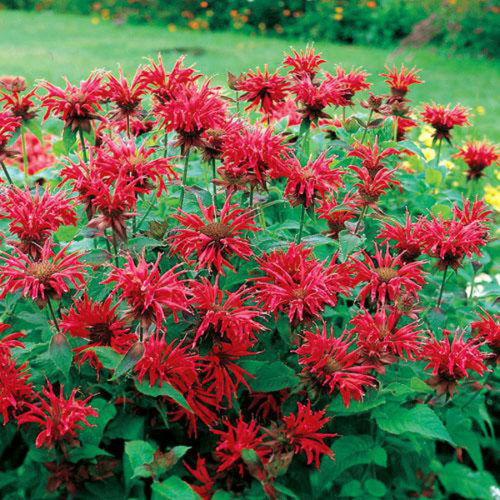
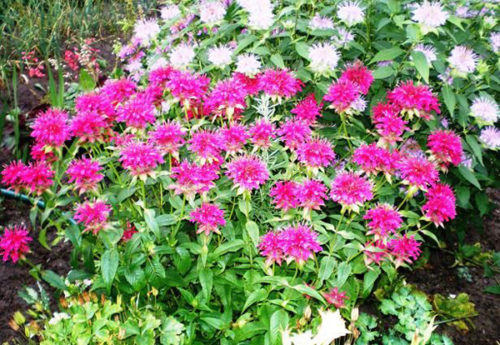
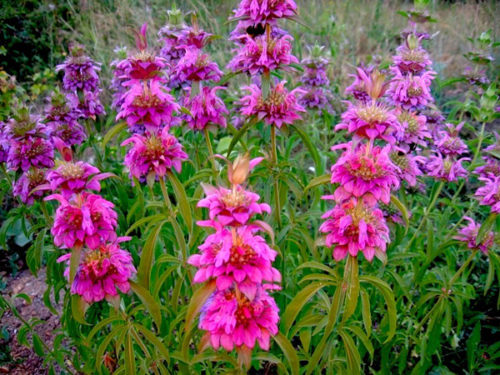
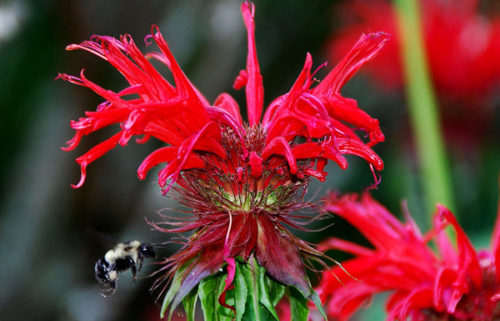

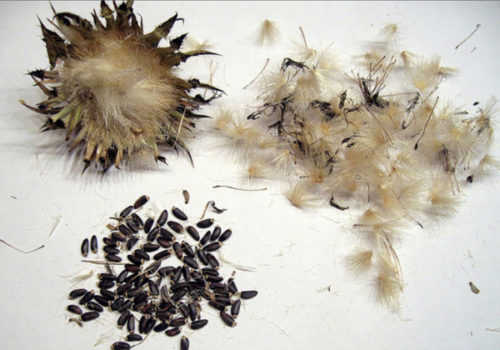
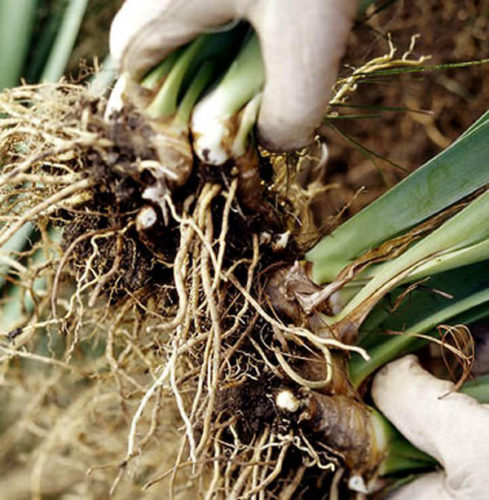
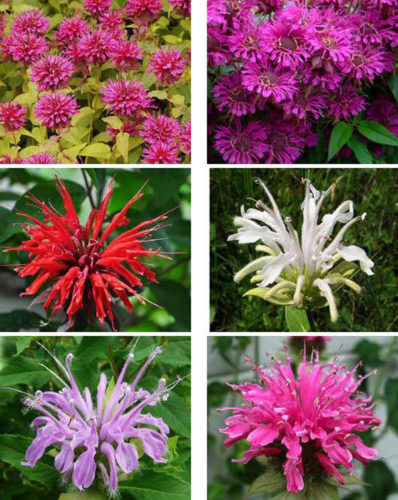
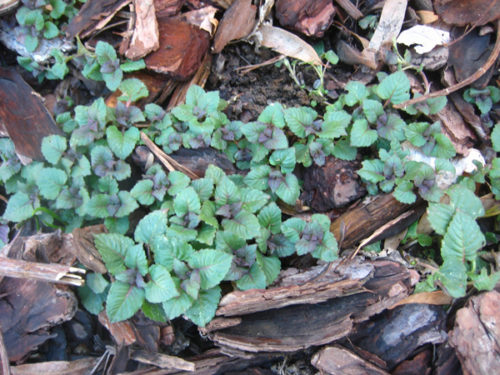


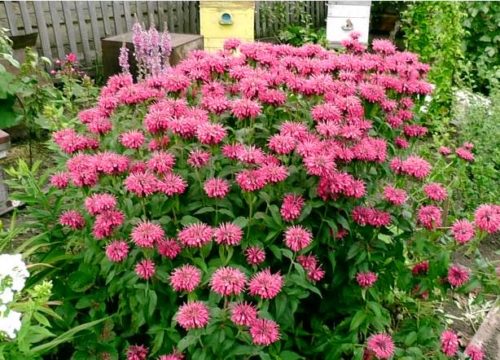
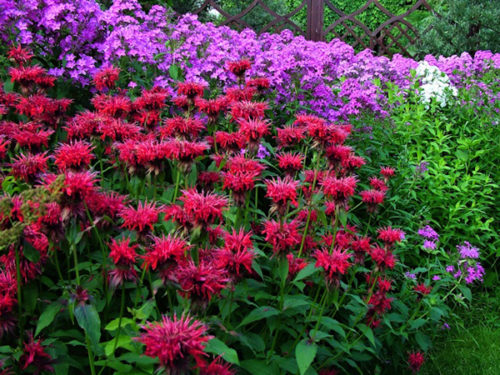
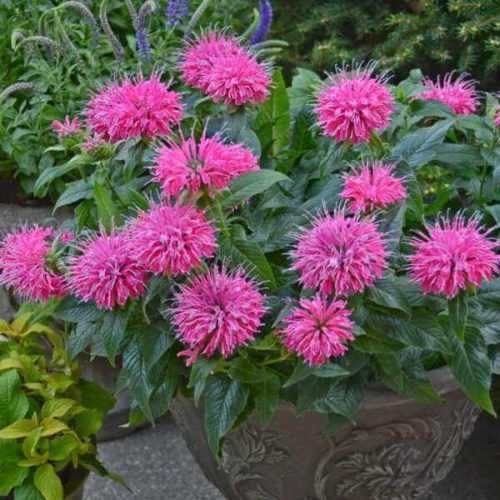
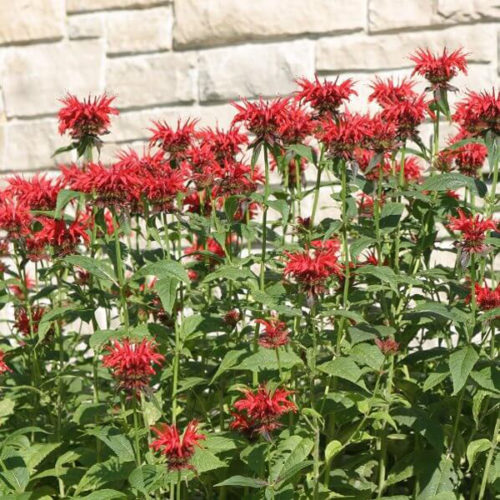
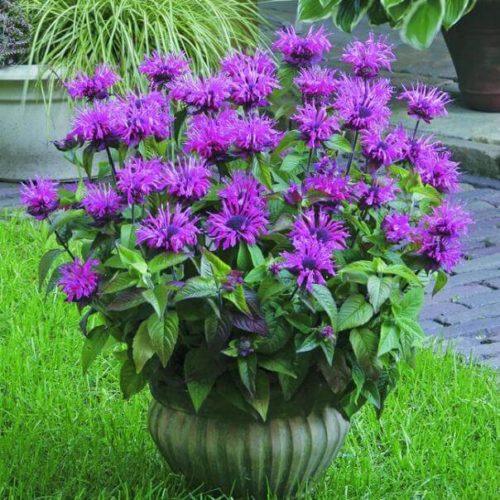












 Start a discussion ...
Start a discussion ...